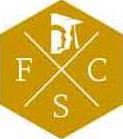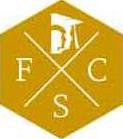FORSYTH COUNTY — Teacher salaries are expected to increase next school year, while Forsyth County school taxes likely will remain the same, as indicated in the preliminary 2017 budget that was presented Thursday to the Board of Education.
A highlight of the proposed $369.6 million spending plan was a 3 percent pay increase and a 2.5 percent step increase for all eligible employees, as well as the decision to keep the millage rate at 17.3 mills.
The millage rate is used in the formula to calculate property taxes. One mill equals $1 for every $1,000 in assessed property value, and assessed value is 40 percent of the actual market price.
“I think it’s a smart, fiscally responsible budget that will provide for our teachers and students,” said School Superintendent Jeff Bearden.
If approved in June — before the fiscal year begins on July 1 — spending on salaries and benefits for employees will account for nearly 89 percent of the district’s annual costs.
The current year’s budget gave a 2 percent pay raise and step increases. In 2015, step increases were given and three remaining furlough days were taken away. In 2014, pay was raised by 2 percent with a 1 percent increase in 2013.
Funding an additional 225 positions — including 129 teachers, two principals, an athletic and activities coordinator and 32 custodians — will cost $15.9 million, said Rick Gunn, chief financial officer for the school system.
Just 11 of the new custodial positions are for the two schools slated to open this fall, Brandywine Elementary and DeSana Middle. The rest are to cover expansions completed on existing campuses.
Kristin Morrissey, board member for District 2 in south Forsyth, and Tim Amerson, facilities director, said the combined square footage of the various construction projects throughout the county’s 34 schools equals a new high school.
The district added 124 positions last year.
Student growth is projected to increase by 1,849 students, or 4.2 percent.
Since 2007, the full-time student population has grown by 79.5 percent.
The district also made room in the budget to make an initial payment of
nearly $2 million for the Alliance Academy of Innovation, a new alternative public high school that will be built in Cumming.
Even with the incoming growth and added costs, Gunn said the district’s revenue is expected to exceed costs by $2.8 million, which would bring the estimated ending 2017 fund balance to $52.5 million.
That amount would be more than 15 percent of the costs, which helps bond ratings and makes funding capital projects cheaper.
As proposed, the school system is expected to bring in $23.3 million more than last year and spend $29.9 million more.
An estimated $177.8 million is slated to come in from local sources, while $194.6 is projected to come from state and federal funding.
Though the tax digest is not set yet, Gunn said the most recent projection is that it will grow by 5 percent, with the district collecting an estimated $161.8 million in taxes after exemptions and the 2.5 percent commission taken by the county.
One goal is for revenue to help offset an expected $3.9 million lost due to austerity reductions.
This money is lost when the district does not receive the full funding it is supposed to from state QBE earnings, which is based on student enrollment.
Since austerity reductions began in 2003, the school system has lost $158 million.
If the board approves the preliminary budget at its May 19 monthly meeting, it will be advertised and open for public comment before being adopted this summer.

